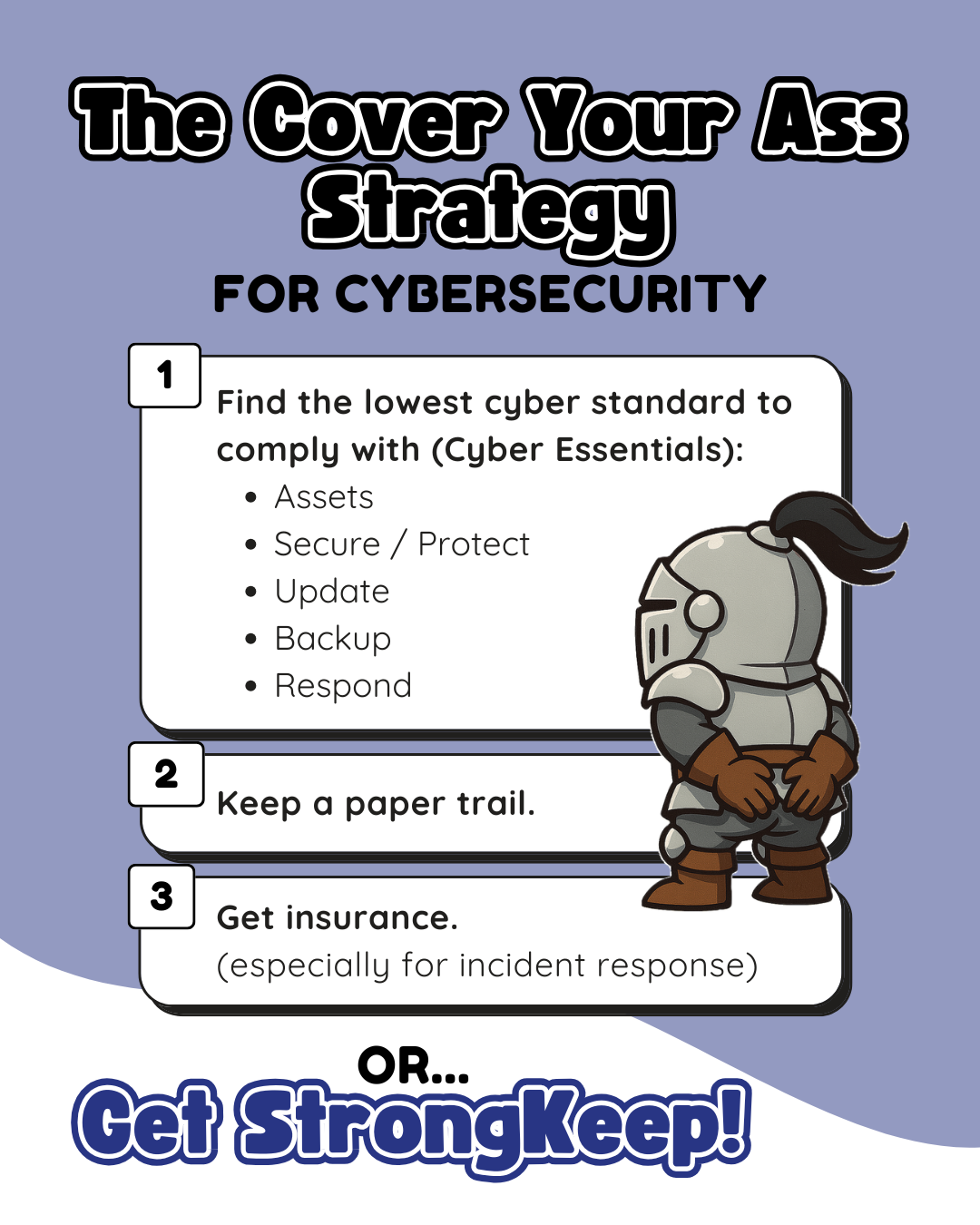
There’s a common misconception that cyberattacks mainly target large corporations. In reality, 39 per cent of small businesses in Singapore report losses or disruptions due to cyberattacks in Singapore in 2024.
However, while the need for stronger cyber posture is clear, the question remains: who takes on the task? In most small and medium-sized (SMBs) with no extra headcount or budget, the responsibility often falls on the shoulders of the IT manager.
When You’re the One-Man IT Show
In SMBs, it’s common to find just one person running the entire IT show. No fancy cybersecurity team, no specialist consultants, just an overstretched IT manager handling everything from laptops and email to cloud apps, printers, and day-to-day troubleshooting. Then, when upper management casually adds, “Since you’re IT, you should look into the cybersecurity stuff too,” it often leaves the poor IT manager frantically scrambling for answers on Google or ChatGPT, all while juggling an already overloaded list of tasks.
Let’s be honest: most IT managers in this situation aren’t dreaming of becoming cybersecurity gurus, they’re just trying to avoid the dreaded blame game if something bad happens. That instinct to “cover your ass” is natural, they just want to be able to face their bosses and confidently say, “Here’s what I did. It was reasonable, and here’s the proof.”
As the IT manager of an SMB, you’re already wearing the cybersecurity hat, even if it’s only 10% of your job. While that means you’re responsible for implementing security controls and recommending improvements, you’re not accountable for overall business risk—that belongs to management.
Minimum Viable Cybersecurity: How to Do Just Enough to Pass
So, here’s the gameplan: do just enough, don’t aim for perfect security. By implementing best practices and documenting your cybersecurity efforts, you not only safeguard your organisation but also build a solid case for yourself while keeping those pesky threats at bay.
We assure you that cybersecurity isn’t as hard as it seems. Let’s look at some essential practices that will dramatically lower your risk without the stress of chasing perfection!
Cyber Essentials as a Basic “Cover Your Ass” Strategy
The very first thing that we’d recommend you get started on is the Cyber Essentials Mark (CEM), developed by the Cyber Security Agency of Singapore (CSA). The CEM is a foundational cybersecurity certification designed to help organisations implement and maintain essential cybersecurity measures. It includes a self-assessment that doubles as a practical checklist, which guides and helps you stay on track of securing user accounts and passwords, backing up critical data, keeping systems and software up to date, protecting endpoints, conducting staff training on cybersecurity awareness, and preparing a basic incident response plan.
What makes CEM especially useful is that it not only helps you establish the core cybersecurity controls but it also provides clear documentation of what’s being done and what still needs attention. This becomes invaluable when reporting to management or your board, because you’re able to show how you’re actively addressing cybersecurity risks and fulfilling your responsibilities, all while covering your back should incidents occur.
A Solid Paper Trail Is Your Best Friend
However, ticking boxes on a checklist isn’t quite enough on its own.
Documenting every step you take, is equally important. Documentation allows you to capture all relevant details such as advice provided, risks that were knowingly accepted, names of individuals involved, and specific actions taken. By recording the security controls you’ve implemented, the gaps identified, available resources, and the decisions made by management, you create a clear and defensible record of what was discussed and agreed upon.
If anything goes sideways, these records will serve as back up for your actions and decisions and become evidence to show you took reasonable, professional steps. That’s how you protect yourself from unfair blame, especially if conflicts arise later.
Beyond risk management, consistently documenting your work also builds your reputation for being thorough and reliable, which are qualities that every workplace values and strengthens your credibility over time.
Insurance—The Ultimate “Cover Your Ass”
Once you’ve got your basics sorted and a solid paper trail in place, the next smart layer of protection to consider is cyber insurance.
Cyber insurance won’t stop an attack from happening, but it acts as a critical safety net when things go south. If your organisation suffers a breached or cyberattack, having this coverage can help you recover costs, manage liabilities, and avoid financially crippling damages.
Let’s be real—having insurance isn’t just an optional extra, it’s smart business. It shows that you’re not only following best practices but also proactively managing risks through smart risk transfer. Cyber insurance policies are designed to help businesses and individuals handle potential hefty financial losses from incidents like ransomware, data breaches, and business interruption. As cyber threats become increasingly common and costly, more organisations are turning to insurance to limit their exposure and support recovery.
But here’s the catch: insurers usually won’t offer meaningful coverage unless you’ve already implemented adequate security measures. This means that if you want that safety net, you'll need to make sure you've got solid cybersecurity practices in place to prove that you’re taking steps to protecting your systems. That’s where frameworks like CEM come into play. You'll not only be able to answer insurers’ questions confidently but also demonstrate to management and stakeholders that you're serious about cybersecurity.
In short, investing in cyber insurance isn’t just about protecting your organisation financially, it also gives you access to specialist expertise and incident response support that can make all the difference when navigating the chaos after an attack.
Cybersecurity Doesn't Have to End Your Career
We get it—you’re wearing every hat in the building: IT, operations, support, and now cybersecurity, too. It’s a lot and the stakes can feel overwhelming.
But here’s the good news: cybersecurity isn’t about chasing perfection. It’s about owning your role with confidence and sticking to the essentials. Use the CSA CEM checklist to guide your efforts, keep clear and thorough documentation to back up your decisions, and make sure your business is covered with cyber insurance. Once you’ve got these in place, you’re already taking smart, steady steps that protect your organisation, meet your board’s expectations, and cover your own back.
The best part? You don’t have to do all these alone! Purpose-built to support IT managers like you, StrongKeep brings compliance, protection, and insurance altogether in one intuitive platform. Through StrongKeep’s AI-powered CEM compliance feature, you’ll get guided step-by-step help, complete with templates, so you can nail your certification in just a few weeks. Plus, access to StrongKeep’s Library allows you to store all your policies, artefacts, and documentation safely, so you’ve always got evidence to back you up. To top it off, StrongKeep partners with Protos Cover to offer cyber insurance as a critical part of your “Cover Your Ass” strategy, helping you bounce back faster when an attack occurs.
StrongKeep gives you all the tools you need to run the cyber show smarter, not harder. Stop letting cybersecurity be a burden, use it to shine in your role instead!

